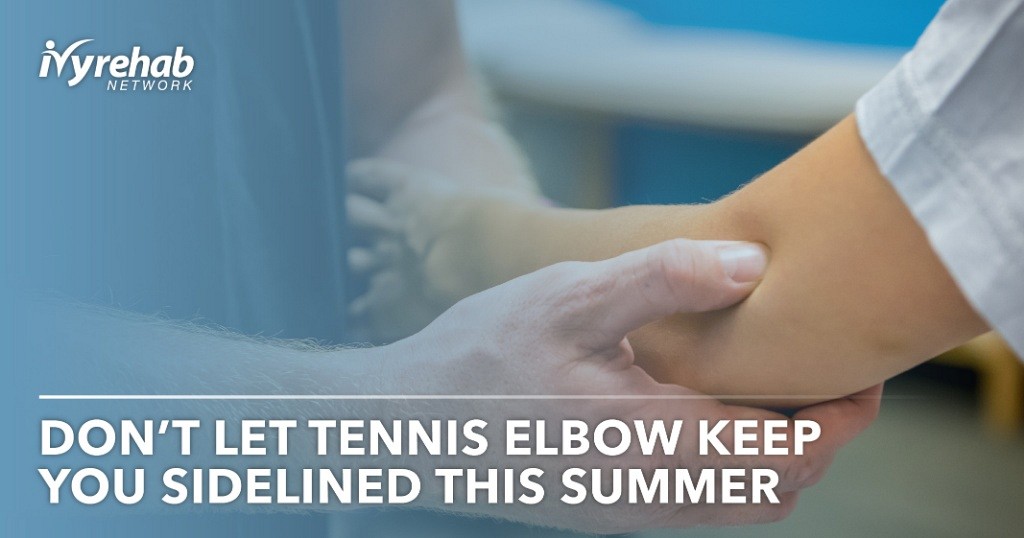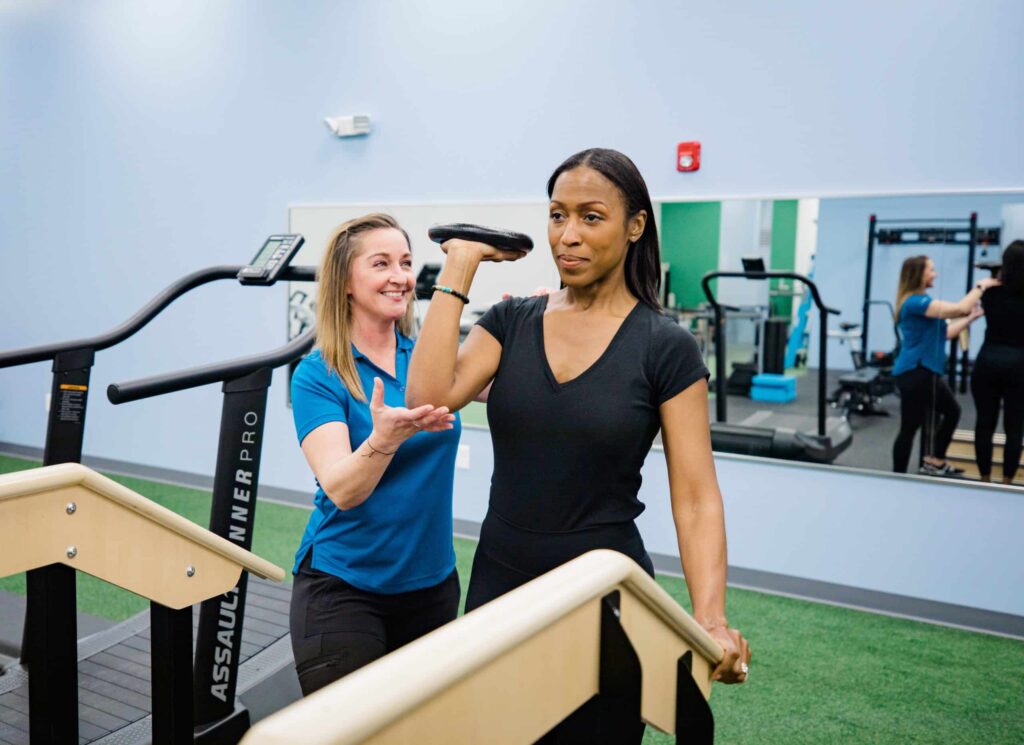Tennis elbow can strike whether you play pickleball year-round or work as a chef in a gourmet restaurant. While it’s called tennis elbow, athletes aren’t the only people who can experience this painful condition. Tennis elbow, also called lateral epicondylitis, occurs when tendons in your elbow are overworked or become inflamed. This usually happens from repetitive motions of the wrist and arm. Repeated contraction of the forearm muscles when you straighten and raise your hand and wrist – or swing a racquet – can trigger the condition. Many people who participate in work and recreational activities that require repetitive and vigorous use of the forearm muscle have tennis elbow. A hallmark sign of tennis elbow is pain and tenderness in the bony knob on the outside of your elbow.
Causes of Tennis Elbow
Playing tennis or any racquet sport on a regular basis or with poor technique is the most common cause of tennis elbow. Besides the impact of hitting the ball, repetitive motion and overuse can cause muscle strain, inflammation, and pain. This leads to irritation of the tissue connecting the forearm muscle to the elbow. In some cases, tiny tears form in the tendons that join the forearm muscles on the outside of the elbow. Overuse, repetitive activities, and age typically trigger the onset of tennis elbow.
Factors that Increase Your Risk
Age: Tennis elbow is most common in adults between the ages of 30 and 50.
Occupation: Jobs that involve repetitive motions of the wrist and arm, along with lifting weight or gripping. Plumbers, painters, carpenters, cooks, and butchers are prone to the condition.
Sports: Athletes are also at increased risk, especially if they participate in racket sports or have poor stroke technique. These sports include tennis, racquetball, pickleball, squash, fencing, and weight lifting.
Hobbies: Typing, painting, raking, knitting, and other repetitive use activities can cause tennis elbow.
Some common arm motions that can cause tennis elbow include:
- Using plumbing tools
- Painting
- Driving screws
- Cutting up cooking ingredients, particularly meat
- Repetitive computer mouse use
Symptoms of Tennis Elbow
Pain is the most common symptom related to tennis elbow. You primarily feel it where the tendons of your forearm muscles attach to the bony bump around your elbow.
- Symptoms may start off gradual
- Pain often begins as mild and worsens over weeks and months
- Usually, no specific injury is associated with the start of symptoms
- Pain or burning on the outer part of your elbow
- Weak grip strength
- Typically affects the dominant arm but both arms can be affected
Continued overuse or forearm activity can make the symptoms worse. Pain sometimes radiates into your forearm and wrist, making it difficult to:
- Hold a racquet or cup of coffee
- Turn a wrench or doorknob
- Shake hands or grip an object
- Lift something
- Raise your hand or straighten your wrist
Physical Therapy Can Help
Start with some self-care. Rest, ice and an over-the-counter anti-inflammatory or pain reliever should alleviate your symptoms. Approximately 80% to 95% of patients have success with nonsurgical treatment. Talk to your doctor or contact a physical therapist or occupational therapist if your elbow pain and tenderness doesn’t go away. Therapy can help improve the strength and flexibility of your forearm muscles and get the blood flowing to the tendons. Therapists can pinpoint the source of your pain and suggest lifestyle changes. As movement specialists, they can show you specific exercises and stretches for the muscles of the forearm or ways to avoid aggravating the condition and also may recommend an ultrasound, ice massage, or muscle-stimulating techniques to improve muscle healing.
Tips to reduce tennis elbow
- Wear a brace to support your forearm and elbow
- Wrist stretching and range of motion exercises
- Steroid injections and shock wave therapy
- Check your equipment for proper size, fit, and performance
Ivy Rehab offers many treatment options for tennis elbow and other arm pain, so don’t let it interfere with your summertime activities. Call an Ivy Rehab clinic near you and get back on the court or doing whatever it is that you love!
Article Reviewed by Holly Lookabaugh-Deur, PT, DSc, GCS, CEEAA
Holly Lookabaugh-Deur, PT, DSc, GCS, CEEAA is a practicing physical therapist and a partner and Director of Clinical Services at Ivy Rehab Network. Deur is board certified as a geriatric clinical specialist and certified exercise expert for aging adults with more than 35 years of clinical experience. She is certified as an aquatic and oncology rehabilitation specialist and serves as adjunct faculty at Central Michigan University and Grand Valley State University.







